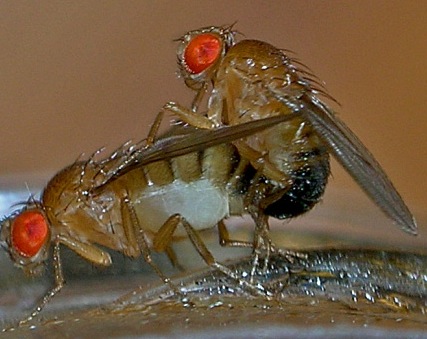Science News
Power of Fly Bacteria
November 2, 2010

Halloween is over, but some new research sounds like a horror movie scenario: bacteria in the gut of the fruit fly Drosophila melanogaster not only influence the fly’s mating behavior, they may also contribute to developing an entire new species of fly!
Israeli researchers, publishing in the Proceedings of the National Academy of Sciences this week, split flies into two different groups, feeding them two separate diets. Previous research showed that when rejoined, the flies preferred to mate with those who had the same diet.
Why?
The Israeli scientists suspected it had something to do with the bacteria living inside the flies. Different bacteria appear in our bodies depending on what we eat. And, according to author Eugene Rosenberg, quoted in Science Now, “Bacteria have to do with smell, and smell has a lot to do with sex."
To confirm this theory, the researchers treated the flies with antibiotics to rid their bodies of the bacteria. Guess what? When rejoined, the flies mated with anyone, without regard to diets!
With genetic testing, the researchers were even able to specify which bacteria cause the mating behavior in the fruit fly: Lactobacillus plantarum.
This research has scientists excited about other possibilities, too. Mike Ritchie, an evolutionary biologist in the UK who also works with this species of fruit flies, has this to say in Nature: “We know that plant-eating flies show very high speciation rates. This could be a general mechanism.” Meaning that the bacteria could even lead the flies to creating a new species.
And it reaches beyond fruit flies. Ed Yong had this to say in his blog on Discover:
In any case, the study suggests that you can’t understand an animal’s evolution simply by considering the evolutionary pressures that act on its genome. You also have to consider the genes of the bacteria and other passengers that live inside it, which also create variations in its behavior and affect is chances of survival.
These findings could give a whole new spin on the age-old question, “What’s eating you?”
Creative Commons image by TheAlphaWolf